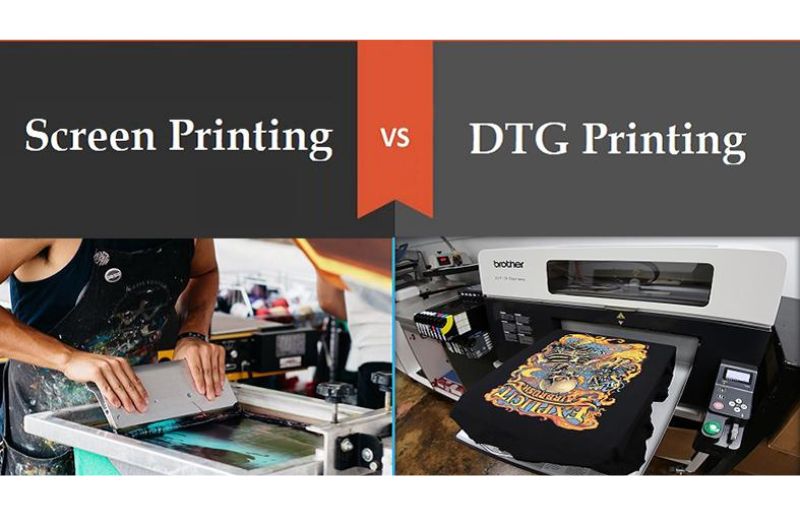
DTG Vs. Screen Printing
In the ever-evolving world of custom T-shirt printing, Direct-to-Garment (DTG) and screen printing remain two of the most popular methods. While screen printing has long been the industry standard, DTG has rapidly gained ground, offering a modern, high-detail alternative. Both techniques have strengths, and the choice depends on your unique needs.
At TheInkcreations, we don’t just talk about these methods. We use them daily to craft high-quality, custom apparel that brings designs to life. Whether looking for vibrant, long-lasting prints or quick, on-demand production, understanding the differences between DTG and screen printing will help you make the best choice for your project.
This article breaks down the key distinctions between the two so you can confidently select the printing method that best aligns with your vision. Let’s dive in!.
What Is Screen Printing?
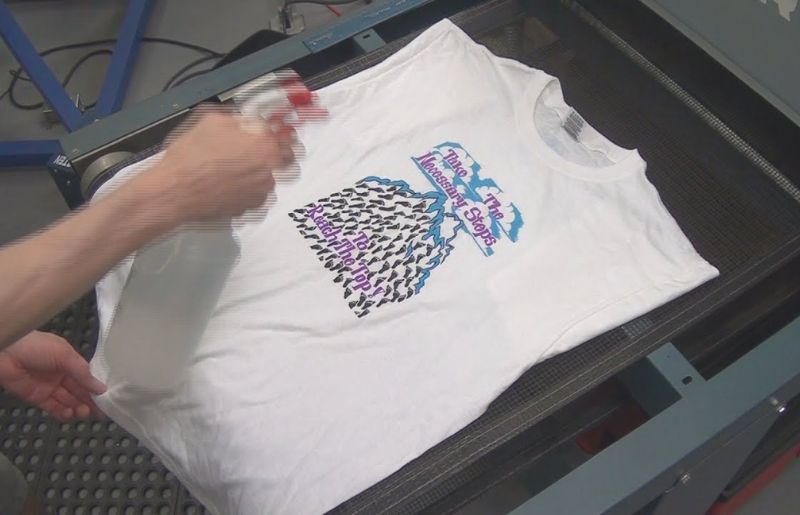
Screen Printing
Screen printing, also known as silkscreen printing, is one of the most well-established and widely used methods for decorating apparel. This traditional technique has been practiced for thousands of years and remains a cornerstone of custom garment decoration.
The process involves using a separate stencil, or screen, for each ink color. The ink is then pushed through the screen and applied layer by layer onto the fabric before being cured (heated) to set the design.
Screen Printing Technology
Thanks to advancements in automatic machines, modern screen printing is faster and more efficient than ever. For example, we can print over 100 T-shirts per hour with state-of-the-art equipment. This high-speed capability enables large-scale orders to be handled while maintaining the exceptional quality our clients expect. For instance, we produce tens of thousands of shirts for the Philadelphia 76ers every season, completed in just a few days.
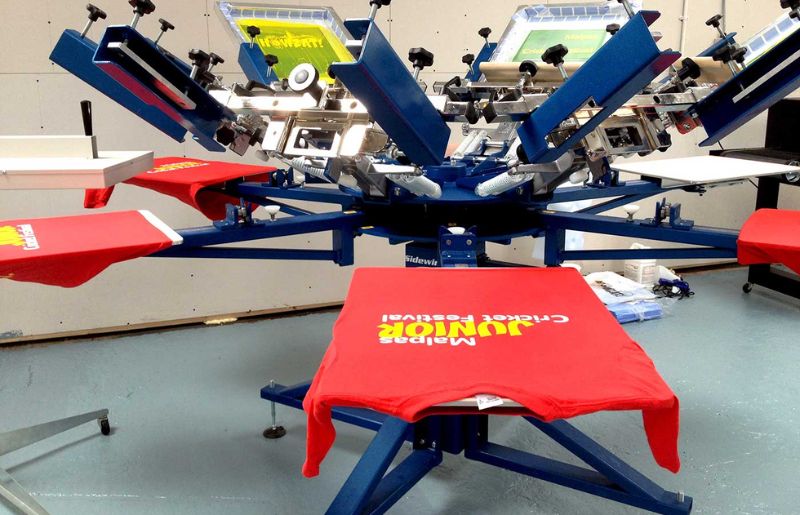
Screen Printing Technology
While the technology has evolved to increase quality, precision, and output, the core principles of screen printing remain unchanged, and that’s what we appreciate most about the process. Even with newer methods like direct-to-film transfers, manual screen printers are still required to ensure every shirt is hand-printed with care and attention to detail.
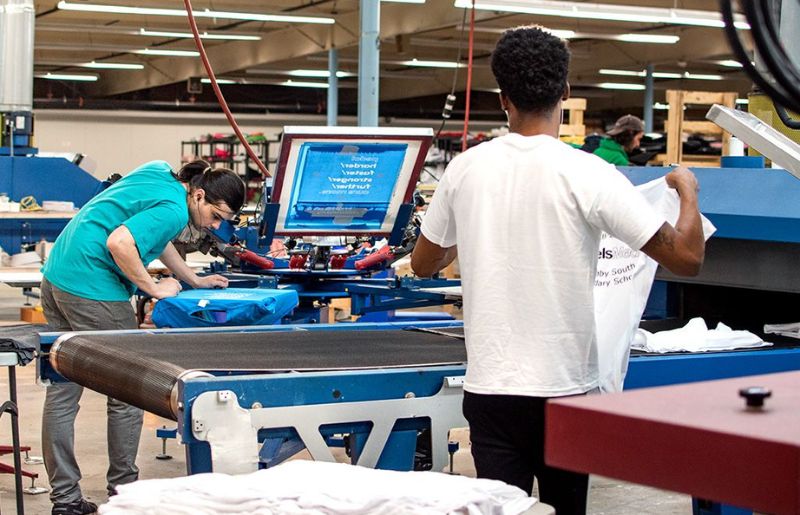
Screen Printing Technology
Why Choose Screen Printing Over DTG?
Screen printing offers several advantages, making it the preferred method in specific scenarios. Here’s why it might be the better choice for your custom apparel project:
- High-Volume Orders: Screen printing is highly efficient for large production runs, allowing for cost-effective printing of hundreds or thousands of items.
- Unique or Oversized Designs: It accommodates custom print areas and oversized designs that might not be feasible with DTG.
- Single-Color Prints: Simple designs like text or logos are ideal, especially when only one color is needed.
- Specialty Inks: Screen printing excels with special effects, such as metallics, puff inks, or glow-in-the-dark options.
- Synthetic Fabrics: It performs better on polyester and other synthetic materials, providing excellent adhesion and durability.
- Vibrant Colors on Dark Fabrics: Achieves bold and vivid colors on dark-colored garments, thanks to its ability to apply thicker ink layers.
- Exact Color Matching: Perfect for designs that require precise color matching, such as corporate branding or team uniforms.
By understanding these strengths, you can determine whether screen printing aligns with the needs of your apparel project.
What Is Direct-to-Garment Printing?
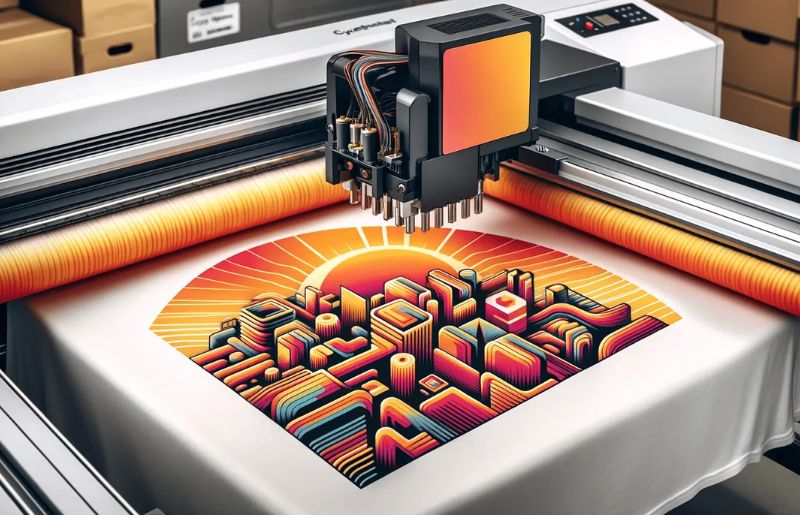
Direct-to-Garment Printing
Direct-to-Garment (DTG) printing is a cutting-edge method that uses the “process” printing technique to create a full spectrum of colors from just a few base inks (cyan, magenta, yellow, black, red, and green). Think of a DTG machine as a large, high-tech inkjet printer that prints directly onto T-shirts and other garments.
DTG Printing Technology
DTG has been around for nearly two decades, and in that time, the technology has evolved rapidly. Each year, DTG machines become faster, more affordable, and capable of producing higher-quality prints. Many of the challenges seen in its early stages, such as durability and color vibrancy, have been addressed, leading to widespread adoption across the apparel industry.
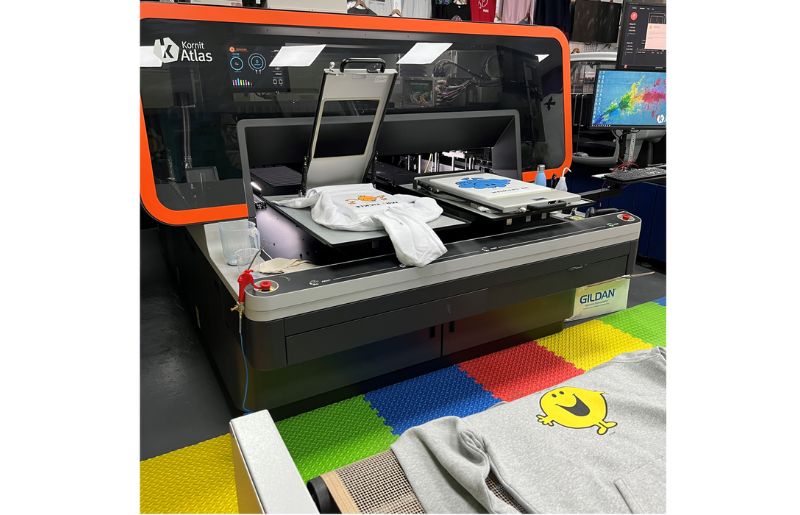
DTG Printing Technology
However, the initial investment in DTG technology is significant, with professional machines ranging from $5,000 to over $500,000. Despite the cost, it’s a worthwhile investment for many businesses. DTG allows companies to accept low-quantity, on-demand orders without the setup time and expense required by screen printing.
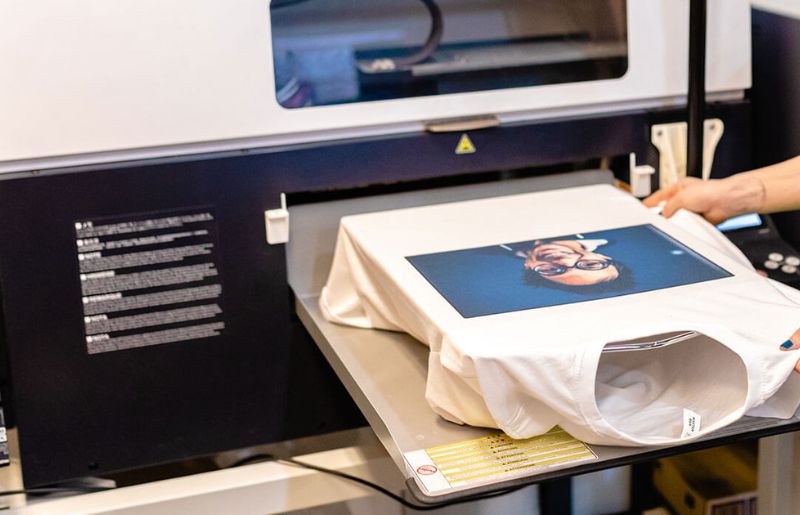
DTG Printing Technology
Today, most online on-demand printing companies rely heavily on DTG machines. At TheInkCreations, we’ve equipped ourselves with some of the most advanced DTG technology, enabling us to efficiently produce high-quality prints. While we use DTG for smaller orders or intricate designs, traditional screen printing remains our go-to for high-volume jobs.
Why Choose DTG Over Screen Printing?
DTG printing shines in several areas where screen printing may not fit. It’s the better choice when:
- Smaller Orders Are Needed: Perfect for short runs or even single-piece orders.
- Standard Print Locations Apply: Works well with conventional print sizes and placements.
- Cotton Fabrics Are Used: Best suited for 100% cotton garments.
- Intricate Designs Are Required: Excellent for detailed artwork, gradients, and photographic elements.
- Many Colors Are Involved: Handles designs with various colors and blends seamlessly.
- Soft, Lightweight Prints Are Desired: Produces smooth and natural prints.
DTG is an excellent option for customized apparel when precision, detail, and flexibility are priorities.
Screen Printing Vs. DTG: What’s The Difference?
Regarding custom T-shirt printing, there are two significant methods to choose from: Screen Printing and Direct-to-Garment (DTG). While both techniques can create stunning designs, they each have unique qualities. Let’s break it down and explore how they differ across key factors in the custom apparel world:
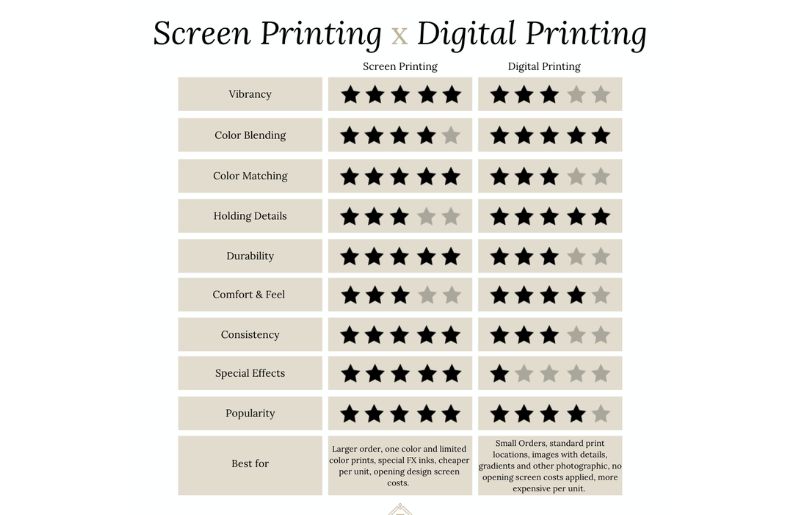
Screen Printing Vs. DTG: What’s The Difference?
1. Vibrancy: Which Method Delivers the Most Eye-Catching Results?
Screen printing takes the lead regarding vibrancy, which refers to color saturation and brightness. Though DTG printing has come a long way, its colors are still slightly less vibrant than those achieved through screen printing.
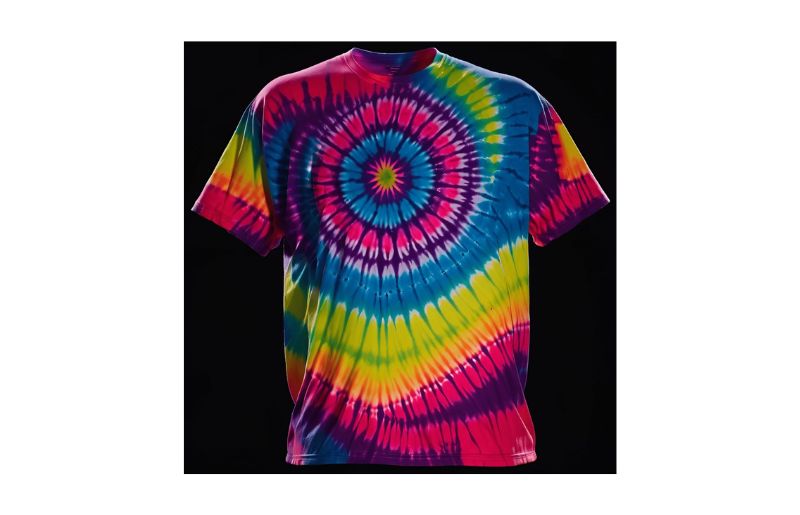
Vibrancy Eye-Catching Results
Screen Printing:
Screen printing uses Plastisol ink, which is highly opaque and capable of creating a bright white under base, especially on dark garments. This ensures the vibrancy of the design pops. Plastisol inks are available in a wide range of bright, vibrant colors, including fluorescents, and can be mixed into custom Pantone shades for precise color matching.
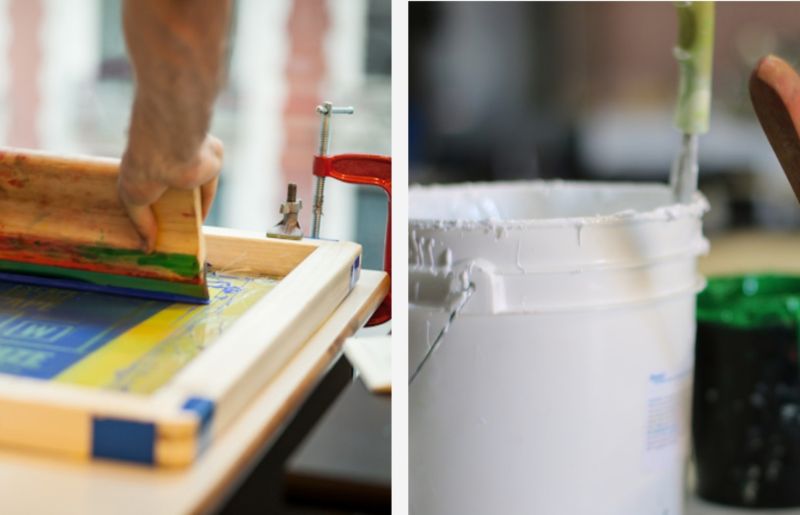
Vibrancy Of Screen Printing
DTG Printing:
On the other hand, DTG uses water-based inks, which tend to be less opaque and not as vibrant as Plastisol inks—particularly on darker fabrics. While DTG can provide a decent under base, the final colors are softer, especially on dark garments. However, DTG excels in providing a full spectrum of colors using the CMYK color model (cyan, magenta, yellow, black), and newer machines incorporate additional colors like red and green for a broader color range.
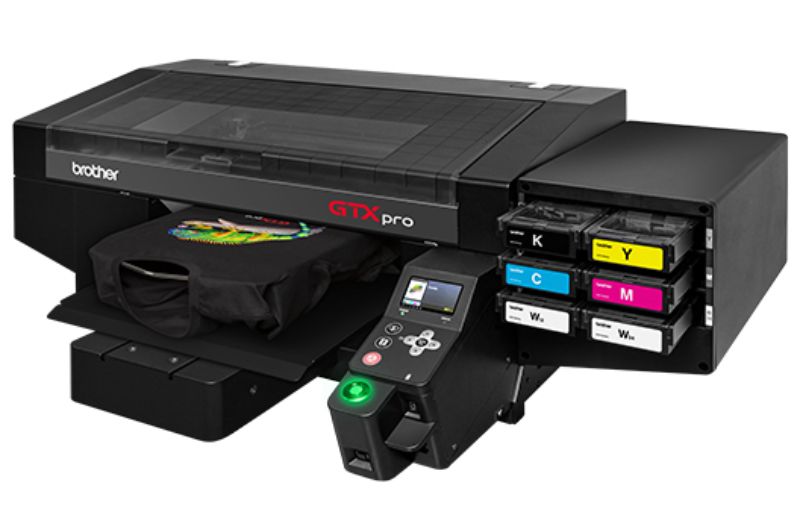
Vibrancy Of DTG Printing
Screen printing is likely the way to go if you’re looking for vibrant, eye-catching prints. But if you’re going for a more subdued or vintage look, DTG can still deliver stunning results.
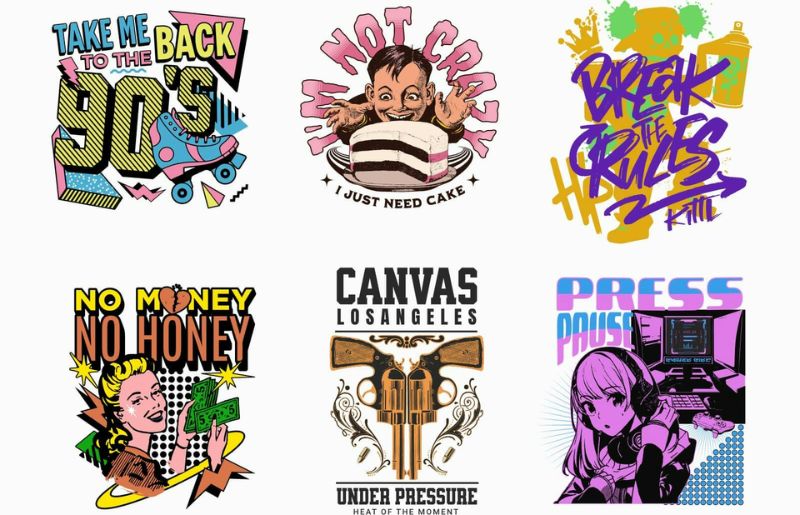
Vibrancy Eye-Catching Results
2. Color Blending: Which Method Handles Gradients Better?
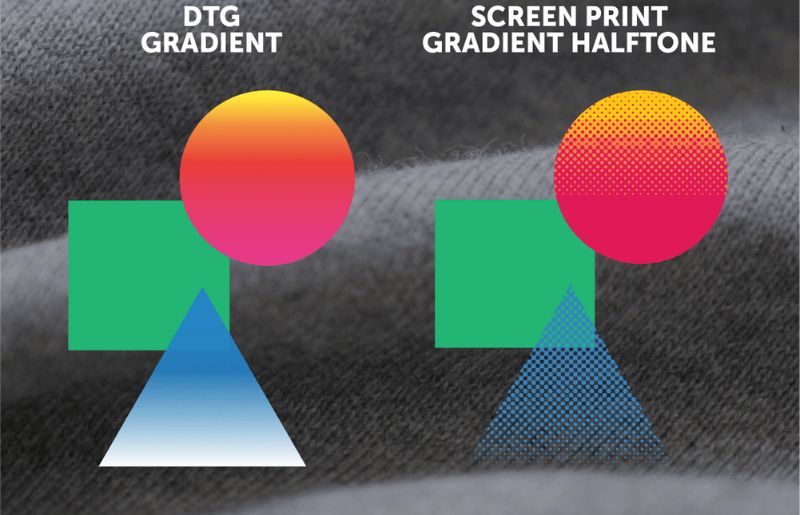
Color Blending
DTG printing excels at color blending, which allows for smooth gradients and subtle transitions in color. Thanks to its ability to use water-based inks that are more transparent than Plastisol inks, DTG can easily overlap colors, resulting in smooth, seamless gradients and blending that’s hard to achieve with screen printing.
DTG Printing:
The higher resolution and transparency of DTG inks (at 1200 dpi) enable the creation of intricate gradients, detailed color nuances, and smooth fades—perfect for designs requiring fine details like skin tones or smoke effects.
Screen Printing:
Screen printing, while versatile, uses halftones and a technique known as the “simulated process” to achieve color blending. However, it’s less efficient for small orders and can be challenging to set up for precise color matching.
For designs that feature gradients or require precise color transitions, DTG printing is a clear winner.
3. Color Matching: Which Method Offers Precision For Your Brand’s Colors?
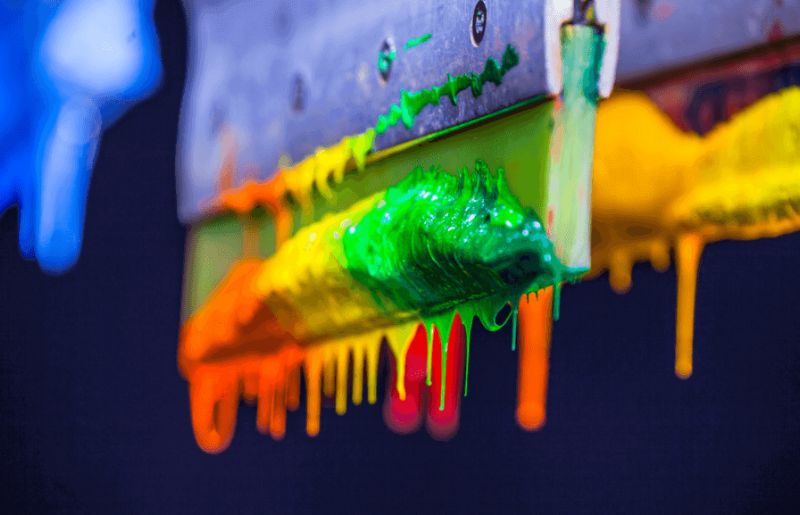
Color Matching
When it comes to color accuracy, screen printing is unbeatable. If you need to match specific colors—especially for brand consistency, screen printing’s ability to duplicate Pantone colors is a significant advantage.
Screen Printing:
Screen printing can match any color you need, including those outside the CMYK range, super-saturated colors, and specialty inks. This precision makes it the go-to option for companies with strict brand guidelines that require accurate color reproduction.
DTG Printing:
DTG uses the CMYK color model and can attempt Pantone matching, but only within the color gamut can it achieve it. Some of the brightest, most vibrant colors may not be possible to reproduce accurately with DTG, and the ink’s transparency can sometimes cause issues on dark-colored shirts, resulting in slight color bleeding.
Screen printing is preferred if exact color matching is critical for your design, particularly for branding purposes.
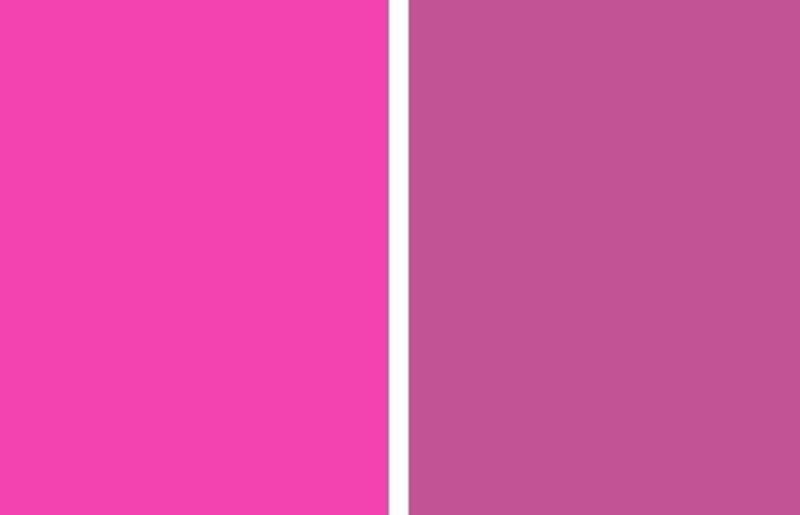
Pantone 807c left, DTG version right.
4. Details: Which Method Handles Fine Details The Best?
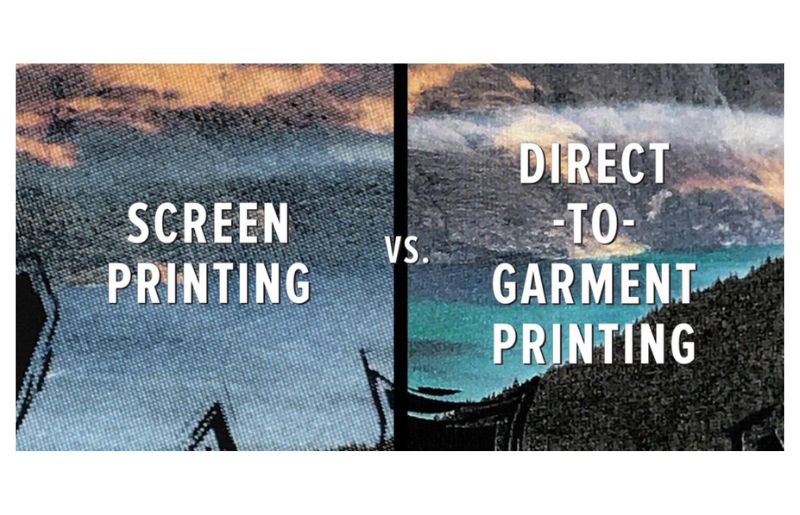
Details
When capturing the most minor details, DTG outperforms screen printing. The ability to print fine lines, small text, textures, and tiny design elements is where DTG truly shines. It consistently maintains these details throughout the print run, ensuring the final product is as accurate as the original artwork.
Screen Printing:
Screen printing often struggles with intricate details, outstanding lines, and small text. While it can still handle these elements, the result is sometimes less precise, and adjustments might be needed. For example, enlarging the text or simplifying design elements may be necessary for a clean print. Additionally, photographic images or gradients require halftones (tiny dots), which can sometimes become visible when closely examined, reducing the sharpness of the design.
DTG Printing:
DTG, on the other hand, doesn’t have the same limitations. With a 1200 DPI capability and diffusion dithering, DTG achieves an even finer level of detail, including high-quality photographic prints and smooth gradients. This high resolution allows for greater accuracy in reproducing fine lines, textures, and complex artwork, making it ideal for designs with a lot of detail.
5. Durability: Which Method Lasts Longer?
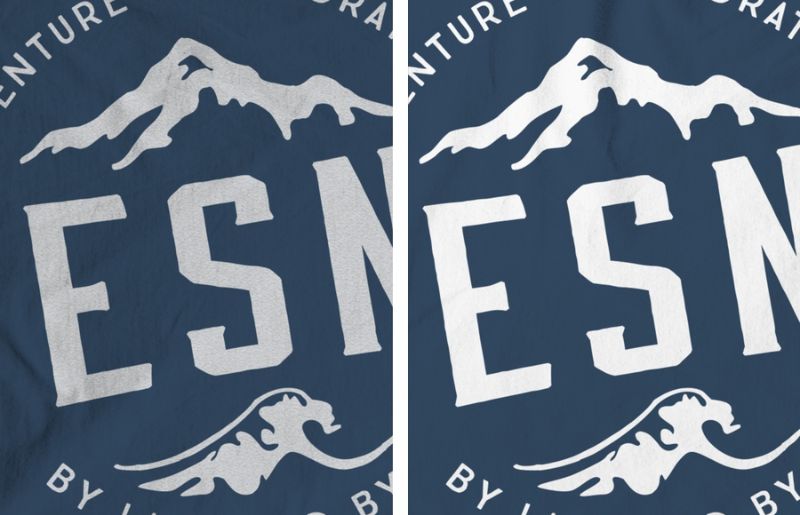
Durability: Which Method Lasts Longer?
Durability is all about how long the print’s quality will last. Screen printing has long been known for its resilience, but DTG has made significant strides.
Screen Printing:
Screen printing is highly durable, especially when done correctly. When Plastisol ink is applied and properly cured, the design can withstand years of use and numerous washes without fading. Even after countless cycles in the washing machine, a well-executed screen print remains vibrant and intact. This long-lasting nature makes it popular for items like uniforms and promotional apparel.
DTG Printing:
DTG has historically faced challenges related to longevity. In its earlier stages, DTG prints often began to fade after only a few washes. However, with advancements in ink technology, modern DTG prints can now endure multiple washes while retaining much of their original quality. While not as indestructible as screen printing, well-done DTG prints are increasingly durable, making them a good choice for designs with complex color variations and details.
6. Comfort And Feel: Which Method Is More Comfortable To Wear?
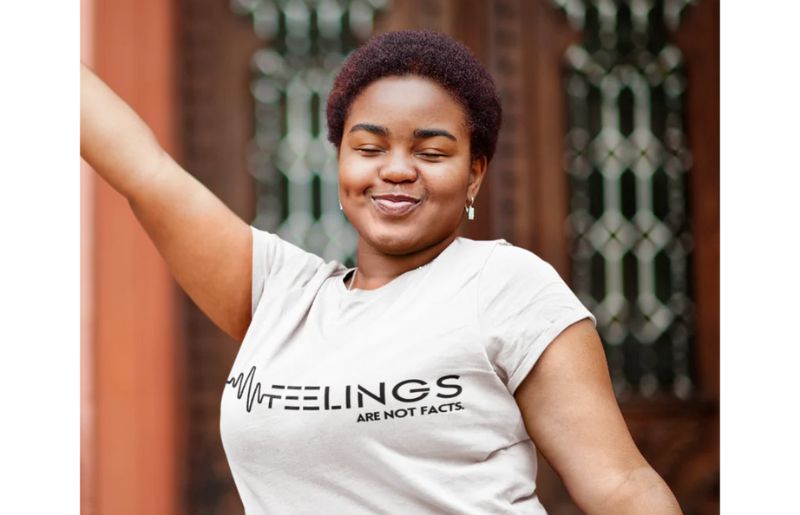
Comfort And Feel
Comfort refers to the feel of the print on the fabric, something essential for T-shirts and other apparel. DTG printing generally offers a superior feel in this area due to its lightweight application.
Screen Printing:
Screen printing typically results in a heavier print due to the thicker layer of ink, which can feel slightly rigid or plasticky. While this isn’t necessarily uncomfortable, it can affect the flexibility of the fabric, particularly with larger designs. For those seeking a more “vintage” or “distressed” feel, screen printing offers water-based or discharge inks, creating a softer, more flexible print.
DTG Printing:
DTG, on the other hand, is known for its lightweight and breathable finish. Since the ink is sprayed directly onto the fabric, there is minimal build-up of ink, which helps maintain the fabric’s natural softness and flexibility. The result is a print that feels more like part of the fabric, offering greater comfort, especially on lightweight or blended garments.
7. Versatility: Which Method Offers More Flexibility?
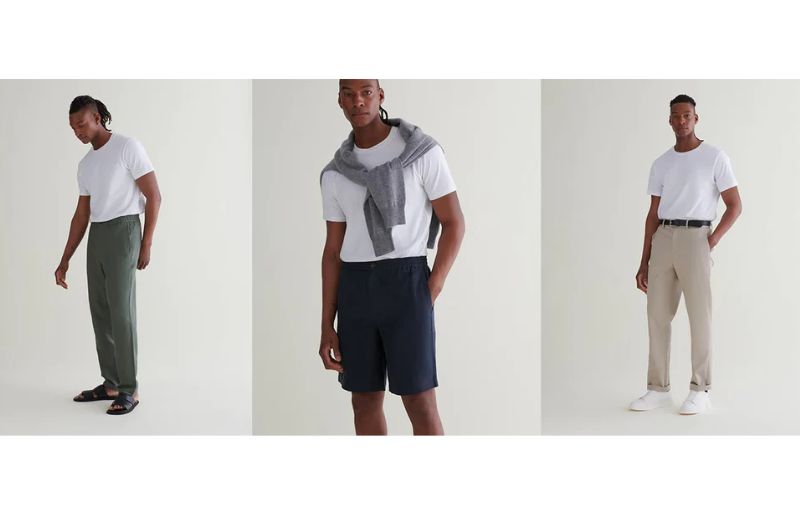
Versatility
Versatility refers to the ability to print on various fabrics, garment types, and design placements. While DTG and screen printing have their strengths, they differ in handling these factors.
Screen Printing:
Screen printing excels in versatility. It can be used on nearly any fabric type, including cotton, polyester, blends, denim, and even more unique materials like canvas or performance fabrics. Screen printing is highly adaptable whether you’re printing on T-shirts, hoodies, or even non-apparel items. It’s also an excellent option for larger runs, as the setup costs are spread out over the volume of prints.
DTG Printing:
DTG is best suited for cotton garments, especially those with a high cotton content. While newer machines have made progress in printing on other fabrics like polyester and blends, the results can vary, and the print quality may suffer. Additionally, DTG can be limited when printing smaller or non-flat items like hats or shoes. However, DTG excels in essential items like T-shirts and hoodies.
8. Consistency: Which Method Produces Identical Results Across A Print Run?
When it comes to producing a consistent batch of prints, DTG and screen printing offer different levels of precision.
Screen Printing:
While screen printing can be consistent, it requires meticulous setup and attention to detail. Screen tension, ink viscosity, registration, and flash drying temperature can all affect the final print. While skilled operators can maintain high consistency, it often takes careful monitoring throughout the print run.
DTG Printing:
DTG is more consistent by nature. Since it’s a digital process, there are fewer variables, and the machine prints exactly as the file is designed. Once the file is loaded, each shirt is printed similarly, leading to less variation in the final product. For designs that require strict consistency, DTG is often the preferred method.
9. Special Effects Inks: Which Method Allows For Creative Additions?
Special effects inks allow for unique, eye-catching designs beyond standard color prints. While both DTG and screen printing offer special effects, screen printing has a more extensive selection.
Screen Printing:
Screen printing offers special effects, including puff inks (for raised prints), metallic inks, glow-in-the-dark inks, and more. These inks can add texture, shine, or dimension to a design, making it stand out. The versatility of these specialty inks allows for incredible creativity, and they’re particularly popular in fashion and high-end custom designs.
DTG Printing:
DTG has some special effects capabilities but is more limited than screen printing. Some newer DTG printers can print with white ink or simulate a metallic effect, but the range of special effects isn’t as broad or widely available. Screen printing is still the go-to option for intricate special effects or designs requiring multiple textures.
10. Popularity: Which Method Reigns Supreme?
When it comes to popularity screen printing has long been the go-to method for custom apparel.
Screen Printing:
Screen printing has been the dominant method for decades due to its affordability, durability, and vibrancy. It’s the preferred choice for high-volume orders, and its ability to print on various fabrics makes it highly versatile. Screen printing is especially popular for promotional items, sportswear, and corporate merchandise.
DTG Printing:
DTG, while growing in popularity, is still catching up in terms of mainstream use. Its ability to handle complex designs and smaller runs at a relatively lower cost makes it ideal for personalized products and small batches. As DTG technology improves, it may also become more popular for high-volume orders.
Which Print Method Should You Choose?
When it comes to picking the proper print method, the choice often depends on your design, order size, and fabric type. But don’t worry, TheInkcreations has your back! Our team of printing experts and project specialists will ensure you get the best method for vibrant, long-lasting results.
Still wondering which option suits you best? We’re always here to help! Whether you prefer a quick chat, a phone call, or an email, we’re ready to assist. And if you’re feeling creative, try sending a message via carrier pigeon. We can’t guarantee a reply, but we love the effort!
At the end of the day, what truly matters is bringing your vision to life. Whether you’re designing for a business, an event, or just for fun, we’re here to make it happen. Let’s create something incredible together. Start designing with TheInkcreations today!. 🚀🎨
